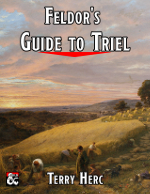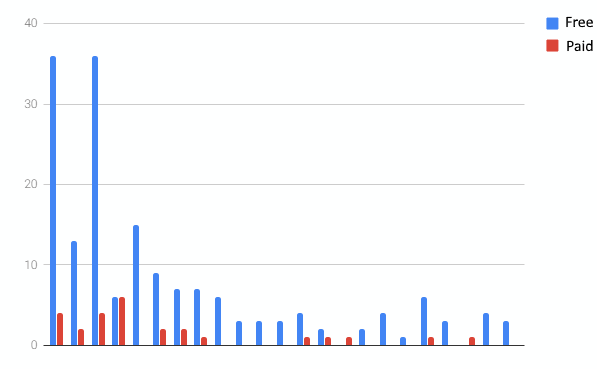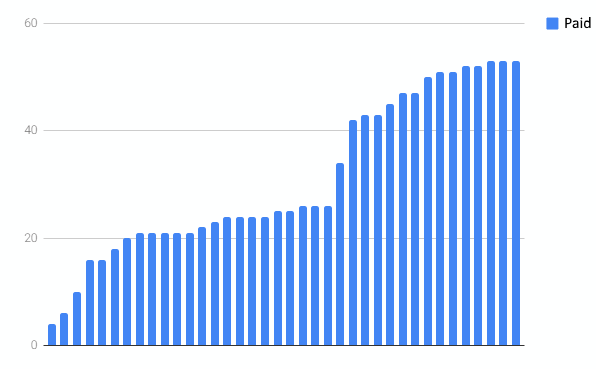 On Sunday June 24th I published a new product on the DMs Guild called Feldor’s Guide to Triel. I had been toying with the character and the concept for some time, as I liked the idea of a bard who wrote gazetteers much like Volo. It also seemed like a good experiment to stretch my worldbuilding skills, and see if this kind of product could be successful.
On Sunday June 24th I published a new product on the DMs Guild called Feldor’s Guide to Triel. I had been toying with the character and the concept for some time, as I liked the idea of a bard who wrote gazetteers much like Volo. It also seemed like a good experiment to stretch my worldbuilding skills, and see if this kind of product could be successful.
This product started as the background to an adventure I was writing. I found I was having lots of fun writing out the town and the NPCs, so I decided to expand it and make it a product of it’s own. A quick scan of the DMs Guild revealed few products of this nature, so I thought it would be good to see if there was a market for this sort of thing.
I told myself that I would let it go to 30 days, and then do a review and evaluate this type of product. As luck would have it, Troy Taylor released the Village of Leilon as a free product on July 6th, so it gave me a chance to do a critical comparison of my own work.
Triel sales and downloads
When I originally developed this piece, I had considered releasing it as a Pay What You Want title. I have a very different opinion of PWYW titles than many, as in my day job I work in an industry where trial and sampling are not only common place, but expected. Even still, I was convinced that the work should be worth something, so I decided to release the full version at 1.99 and a free abridged version simultaneously.
First 23 days of sales:

The first 23 days were good, not great. I’ve released 5 products before this one and this was not my slowest release, it was more middle of the road. I had 173 free downloads and 26 paid purchases, which is about 15.02% sales-to-free ratio. This is higher than my other two PWYW titles (Journey to Chult, 395 days at 13.64%, and Karniv’s Enchanted Oddities, 375 days at 8.67%). For reference, I have read that a common ratio is around 8 to 10%.
Even still, I’ll admit I was initially disappointed. For one, I invested a lot of time into the writing and creation of the product. The other is that my more recent products had seen a bigger update, although they were themed around the Chult storyline.
On the 24th day, something dramatic happened: the free edition of Feldor’s Guide to Triel was the Free Product of the Week. Free downloads skyrocketed – with 1267 in three days, bringing the total to 1440 for 26 days. Paid downloads also increased by 15, bringing it to 41. I also saw a bit of an uptick on my other lines, but nothing substantial.
38 days in, Feldors Guide to Triel has 1712 free downloads and 53 paid downloads, which means it should soon be a copper seller. Below is a second graph of cumulative paid sales. With all the free product downloads, the free to paid ratio is shot, with the product now coming in at 3.09%.
Cumulative paid sales, 38 days:

Comparison to Leilon
When I saw the release of Village of Leilon, I’ll be honest, my heart sank a little. It is good. Very good. And the entire product is also free. I was worried that the market for the product was not big enough to handle two gazetteer products in such a short span. However when I look at the sales, if anything it helped give Feldor’s a bit of a boost. I have 3 sales in the 3 days after Leilon’s release, so perhaps the two coming so quickly stirred up an appetite.
Here’s my comparison of the two:
Production value
Leilon clearly shows Troy’s strong skill with layout tools, which I assume in this case is Adobe InDesign. For all my product releases for far I have been using Scribus, a free alternative to Indesign, which is sometimes difficult to wield.
In terms of the sheet look and layout, Leilon is a work of art. I am still pleased with what I accomplished with Feldor’s, but I recognize that Troy Taylor has a great command of his tools.
Images
Leilon uses stock photos of real people and locations, which are in the public domain and released on Pixabay. Myself, I have been sourcing public domain images from Wikimedia Commons. In terms of how this adds to the product, the consistency of the art in Leilon’s is something that the various painters lack in Triel. I am at the mercy of what I can find in the public domain, as my art budget is extremely limited.
In general, for the art I use in my products, I try to find pieces that are in the same style, but often I can spend hours looking for the right image. And, I have to be especially careful that I only use images that are compatable with the DMs Guile license. That means everything must be in the public domain, or the Creative Commons Attribution (CC-BY), as my understanding that the other licenses available on the commons are incompatible.
Map of the town
Since the release of Triel, several have noted that they would like to see a map of the town. As I was developing the product, I thought about including a map but decided against it. However, the purchasers have spoken, and I will soon be releasing a map as an update to both the free and the paid version.
Leilon on the other hand includes a labeled, hand drawn map. For the scope of the project and what the DM needs, it is perfectly serviceable.
Content and writing
This is the part that I spent the most time on Triel. I’ll be honest, I am very pleased with how the writing turned out. This was really fun to write, and I loved creating the NPCs and linking them together. It made for a long and dense product, and I think that gives it the depth that DMs can get a lot of use and reuse from.
Leilon gives roughly the same amount of space per NPC and location as Triel. The main difference is that there are more locations in Triel and more NPCs. Both products have an NPC at each location, which is important, so it’s not just a land registry, its a living, breathing place.
I find both products to be well written and concise.
Product advertisements
Troy does a fantastic job of including product advertisements in the last 4 pages of his product. Not only does he plug his upcoming product, but also 9 products from his back catalog. And the advertisements are masterfully done and very eye catching. If I were to do a substantial update to the free version, this is something I would include. However Leilon is longer than the free edition of Feldor’s, so it might seem out of place.
Other characteristics
With Feldor’s I also worked in some nearby locations, festivals, a history, and the fictional biography of the author. These are things that I felt added depth to the product, as I imagined a DM using this as the site of multiple adventures rather than the PCs just passing through town. In contrast, Leilon doesn’t have any of these sorts of things, and that might be due to product purpose.
Neither product has a table of contents, which may be a useful addition to Feldor’s in a future update.
Concluding thoughts
Feldor’s is doing better than I thought it would do, but not as good as I’d hoped it would. I would say the success is very much driven by the free edition being the product of the week. Without the bump in downloads, I think the product would have slid from visibility.
Would I do another gazetteer product? Yes, but there are some new things I can try in the future. Leilon is a great example of some of those successful things. I will say that in terms of development time versus revenue, this is my lowest performing product so far. Any future products in this line would either need to be more substantial and fetch a higher price point, or be smaller and likely free.
Overall it was a fun experience and definitely helped build my skills as I look towards larger products. However, I am conscious that this might not have the furthest reach of other product types, like adventures, player supplements, magical items, or monsters. Still, I consider the experience valuable, and once there’s a few more sales and it hits copper, I hope it continues to have a “long tail” success like my other products.
